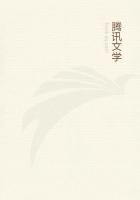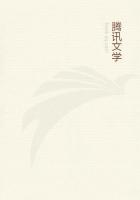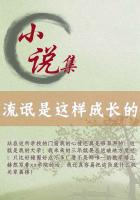To meet among the Wasps, those eager lovers of flowers, a species that goes hunting more or less on its own account is certainly a notable event. That the larder of the grub should be provided with prey is natural enough; but that the provider, whose diet is honey, should herself make use of the captives is anything but easy to understand. We are quite astonished to see a nectar-drinker become a blood-drinker. But our astonishment ceases if we consider things more closely. The double method of feeding is more apparent than real: the crop which fills itself with sugary liquid does not gorge itself with game. The Odynerus, when digging into the body of her prey, does not touch the flesh, a fare absolutely scorned as contrary to her tastes; she satisfies herself with lapping up the defensive drop which the grub (The Larva of Chrysomela populi, the Poplar Leaf-beetle.--Translator's Note.) distils at the end of its intestine. This fluid no doubt represents to her some highly-flavoured beverage with which she seasons from time to time the staple diet fetched from the drinking-bar of the flowers, some appetizing condiment or perhaps--who knows?--some substitute for honey.
Though the qualities of the delicacy escape me, I at least perceive that the Odynerus does not covet anything else. Once its jar is emptied, the larva is flung aside as worthless offal, a certain sign of a non-carnivorous appetite. Under these conditions, the persecutor of the Chrysomela ceases to surprise us by indulging in the crying abuse of a double diet.
We even begin to wonder whether other species may not be inclined to derive a direct advantage from the hunting imposed upon them for the maintenance of the family. The Odynerus' method of work, the splitting open of the anal still-room, is too far removed from the obvious procedure to have many imitators; it is a secondary detail and impracticable with a different kind of game. But there is sure to be a certain variety in the direct means of utilizing the capture. Why, for instance, when the victim paralysed by the sting contains a delicious broth in some part of its stomach, should the huntress scruple to violate her dying prey and force it to disgorge without injuring the quality of the provisions? There must be those who rob the dead, attracted not by the flesh but by the exquisite contents of the crop.
In point of fact, there are; and they are even numerous. We may mention in the first rank the Wasp that hunts Hive-bees, the Bee-eating Philanthus (P.
apivorus, LATR.). I long suspected her of perpetrating these acts of brigandage on her own behalf, having often surprised her gluttonously licking the Bee's honey-smeared mouth; I had an inkling that she did not always hunt solely for the benefit of her larvae. The suspicion deserved to be confirmed by experiment. Also, I was engaged in another investigation, which might easily be conducted simultaneously with the one suggested: Iwanted to study, with all the leisure of work done at home, the operating-methods employed by the different Hunting Wasps. I therefore made use, for the Philanthus, of the process of experimenting under glass which I roughly outlined when speaking of the Odynerus. It was even the Bee-huntress who gave me my first data in this direction. She responded to my wishes with such zeal that I believed myself to possess an unequalled means of observing again and again, even to excess, what is so difficult to achieve on the actual spot. Alas, the first-fruits of my acquaintance with the Philanthus promised me more than the future held in store for me! But we will not anticipate; and we will place the huntress and her game together under the bell-glass. I recommend this experiment to whoever would wish to see with what perfection in the art of attack and defence a Hunting Wasp wields the stiletto. There is no uncertainty here as to the result, there is no long wait: the moment when she catches sight of the prey in an attitude favourable to her designs, the bandit rushes forward and kills. Iwill describe how things happen.
I place under the bell-glass a Philanthus and two or three Hive-bees. The prisoners climb the glass wall, towards the light; they go up, come down again and try to get out; the vertical polished surface is to them a practicable floor. They soon quiet down; and the spoiler begins to notice her surroundings. The antennae are pointed forwards, enquiringly; the hind-legs are drawn up with a little quiver of greed in the tarsi; the head turns to right and left and follows the evolutions of the Bees against the glass. The miscreant's posture now becomes a striking piece of acting: you can read in it the fierce longings of the creature lying in ambush, the crafty waiting for the moment to commit the crime. The choice is made: the Philanthus pounces on her prey.
Turn by turn tumbling over and tumbled, the two insects roll upon the ground. The tumult soon abates; and the murderess prepares to strangle her capture. I see her adopt two methods. In the first, which is more usual than the other, the Bee is lying on her back; and the Philanthus, belly to belly with her, grips her with her six legs while snapping at her neck with her mandibles. The abdomen is now curved forward from behind, along the prostrate victim, feels with its tip, gropes about a little and ends by reaching the under part of the neck. The sting enters, lingers for a moment in the wound; and all is over. Without releasing her prey, which is still tightly clasped, the murderess restores her abdomen to its normal position and keeps it pressed against the Bee's.
In the second method, the Philanthus operates standing. Resting on her hind-legs and on the tips of her unfurled wings, she proudly occupies an erect attitude, with the Bee held facing her between her four front legs.















